

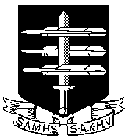 The South African
The South AfricanOriginally published in the Journal of the Royal Signals Institution, vol.27, Spring 2008, pp. 42 - 53. Published on the Website of the South African Military History Society in the interest of research into military history
Copyright Dr Brian Austin 2008.
Ian Smith's Unilateral Declaration of Independence (UDI), in November 1965, undoubtedly set Rhodesia on course for confrontation. Rampant African nationalism had begun to emerge across parts of the continent in the 1950s and really took wing in 1957 when the Gold Coast became Ghana. It was soon to be followed by Nigeria in 1960 while on the east coast, Kenya, though still recovering after the Mau Mau insurrection, moved to independence in 1963. Clearly, and certainly audibly, Harold Macmillan's "winds of change" that chilled the South African parliament, when he addressed it in 1960, were already beginning to blow fiercely further north. And immediately to the north of apartheid South Africa was the Central African Federation, that grouping of the three British colonies of Northern and Southern Rhodesia and Nyasaland into a single federal unit with its capital in Salisbury (now Harare), in Southern Rhodesia. But the Federation was under strain almost from the outset when the surge towards independence in Africa soon became unstoppable as no fewer than 27 former colonies attained their independence from their colonial masters between 1957 and 1964.
Almost inevitably in that climate, the Federation fractured. In 1964, Northern Rhodesia became the independent state of Zambia while Nyasaland was renamed Malawi. But Southern Rhodesia was different. Since 1923 the colony had actually enjoyed quasi-dominion status within the British Empire, similar to that of New Zealand at the time, and to all intents and purposes it was self-governing with Britain having responsibility only for matters relating to foreign affairs. Its economy was sound and its record of responsible government was second-to-none but since that government rested in the hands of the white minority (some 225 000 whites out of a total population of about 3 million) independence on that basis was unacceptable to the African nationalist movements and to the Afro-Asian bloc at the United nations and, equally, within the Commonwealth. And this was despite the fact that the 1961 Southern Rhodesian Constitution, based on a non-racial franchise and agreed by parliament at Westminster, guaranteed majority rule irrespective of race, colour or creed. But for all that, and repeated British assurances that Southern Rhodesia would be granted independence, it all came to nought.
In 1965 Ian Smith, elected Prime Minister the year before by his Rhodesian Front Party after drawn-out negotiations with Britain had got nowhere, took the fateful decision unilaterally to declare Rhodesia, as the country was now known, independent of Britain. His country was now on its own.
At the time of UDI the Rhodesian Army numbered around 3400 regulars and
8400 territorial troops. The Air Force had about 1000 men and 100
aircraft. The manpower figures were soon to increase substantially as
peacetime soldiering turned rapidly to counter-terrorist operations and
then almost to outright war.
The oldest regiment in the army was the Rhodesian African Rifles (RAR),
formed in 1916 as the Rhodesian Native Regiment. It had a distinguished
fighting record beginning in Tanganyika during the First World War and
continuing, as the RAR, in Burma during the Second World War and again
in Malaya in the mid-fifties. The Rhodesian Light Infantry (RLI) was
formed in 1961 as one of five battalions of the Federal Army. Unlike the
RAR with its black troops and NCOs under the command of white officers,
the RLI was an exclusively white unit reflecting the concerns then
emerging in Southern Rhodesia as the former Belgian Congo burst into
flames and the Federation's own foundations began to crumble. At around
the same time an armoured car squadron (equipped with Ferrets) was
formed, as well as a paratroop squadron, essentially a resuscitation of
the Rhodesian C Squadron, Special Air Service (SAS) that had also
operated in Malaya. All were served by
the Rhodesian Staff Corps of some 47 officers and men with its HQ in
Salisbury and amongst whom was 1 Commander Signal Squadron.
The Southern Rhodesian Signal Corps was gazetted in 1948 and affiliated
to the Royal Corps of Signals a year later. Its predecessor was the No 1
Signal Company, numbering some 50 men, almost all of whom had been
recruited from the Southern Rhodesian Posts and Telegraphs Service soon
after the outbreak of the Second World War. They soon found themselves
with numerous other Rhodesians fighting alongside British and other
Commonwealth troops in the Western Desert. Rhodesia's contribution to
the war effort was some 26 000 troops, of whom 15 000 were Africans and 1
500 were women. It was said to have been the largest contingent per
head of population from any country in the Empire.
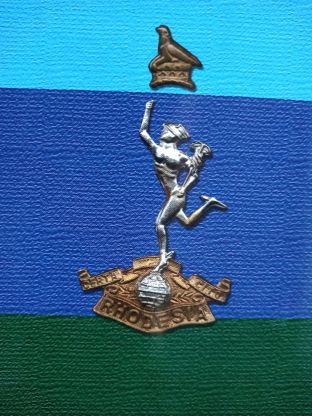
Fig 1 The Rhodesian Army Signals Corp Jimmy
With the setting up of the Central African Federation in 1953 many
changes occurred within the military establishment tables. The Rhodesia
and Nyasaland Corps of Signals (RN Sigs) came into being in February
1957, though 1 Commander Signal Squadron had been in existence before
then and continued thereafter. The first Staff Officer Signals at Army
HQ in 1953 was Major D H Grainger. In 1957, Lieutenant Colonel Grainger
OBE, ED, became the first Director of RN Sigs and served in that post
until 1963. As a colonel, he then commanded 3 Brigade on its formation
in 1967 before retiring to become the first (and only) Honorary Colonel
of RhSigs until 1971.
The pool of Signals talent in Rhodesia was to be increased significantly
during those early years as a result of the influx of a number of
experienced officers and NCOs from the South African Corps of Signals
(SACS). This occurred following the defeat in the general election of
1948 of Field Marshal Smuts's United Party government in South Africa by
the Nationalists who had attempted, by both fair means and foul, to
keep South Africa out of the war - especially if that meant being on the
side of Britain! Memories of the Boer War were both long and bitter. Dr
DF Malan's National Party government soon lost no time in purging the
Union Defence Force (UDF) of senior officers who were perceived to be
"too British" in philosophy and outlook. In their place came men whose
sympathies were much more in line with those of the new government.
Many, of course, had seen little or even no wartime service. The rapid
promotion of officers for reasons of their political compliance rather
than their military credentials was soon evident even at much lower
levels within the rank structure and many English-speaking officers,
seeing their careers suddenly blighted, left the UDF. The immediate
beneficiaries of this haemorrhaging of talent were the Federal Army and
Air Force across the Limpopo River to the north. As a result, by 1960,
some 40 per cent of the European element of the Federal forces were
South Africans.
It was not just the South African military that was losing men of calibre. With the break-up of the Federation in 1963, there was no real drive to improve conditions of service and thereby to make a career in the army seem particularly attractive. Instead the financial brakes were applied after the Federation's demise and many men therefore left the colours.
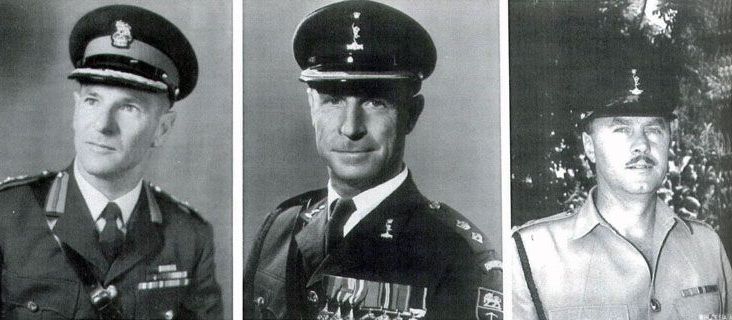
Fig 2.Colonel DHG Grainger OBE ED, Colonel and Honorary Colonel Rh Signals; Lieutenant
Colonel OD Mathews, D Sigs 1964-66; Lieutenant
Colonel WTD de Haast MBE, D Sigs 1967-70
The Director of Signals (D Sigs) at this time was Lieutenant Colonel
Denis Mathews, who had previously been OC The School of Signals of the
SACS. Mathews was faced with a number of immediate tasks: to provide
adequate fixed communications for the Army; to recruit personnel into
the Corps; to ensure that the Corps had sufficient competent instructors
as well as equipment and vehicles for its training role and for the
various squadrons, and most importantly, to replace the radio and other
equipment inherited from the Federal Army that was now both
inappropriate and chronically unserviceable.
The HF radio equipment used by the Rhodesian Corps of Signals at the
time consisted of the SR 62 at Battalion/Company level and the SR A10 at
Company/Platoon level. A note on the nomenclature is in order at this
stage. Whereas the wartime British Army radio equipment was prefixed by
WS for "wireless set", the form changed thereafter and the Rhodesian
Army used SR for "station radio". Hence the SR 62 was the former WS
No.62, developed immediately after WWII and based on those two
workhorses, the WS No.19 and WS No.22. But from here on in this account
of Rh Sigs the numbering system will deviate markedly from the British
scheme of things and even though some numbers may suggest direct
equivalence, it may no longer be the case and readers should be aware of
this fact. It is of interest, too, to note that the A10 was actually an
Australian design known there and elsewhere as the A510. The Rh Sigs
radios were therefore unique unto themselves and in many cases this was
true in many more ways than one!
For communications within infantry battalions the Army used the SR 31
and the SR 88 sets, both of which operated on FM within the 38 to 48 MHz
or "low-band" part of the VHF spectrum. But this equipment had seen
much rugged service with the Federal Army and the sets were now
notoriously unreliable. Consequently, they were well nigh useless. An
experiment, which was to prove to be a portent of an extremely important
development to come, saw the introduction in about 1962/3 of high-band
(118MHz), amplitude modulated (AM) handheld radios designated the SR
47F. They were acquired because of the need for ground-to-air
communications at platoon level but the particular sets were not
sufficiently robust and proved unreliable. However, an important "high
band" VHF application, soon to become vitally important, had been
identified.
Ever since its inception, Rh Sigs had obtained virtually all its
equipment from Britain. If for no other reason, long established ties of
loyalty to the Royal Corps of Signals and to British-manufactured
equipment in general had determined the policy. However, the Rhodesians
had no influence on its specifications or design and occasionally this
meant that equipment was in use that was not entirely appropriate for
the task in hand. In addition, there was the need to keep in stock
costly quantities of spares because of the long procurement and delivery
delays that were typical of the times. And so to circumvent these
problems there was good reason to liaise much more closely with the
rapidly developing South African armaments and electronics industries.
Ties were therefore established in the early 1960s with two companies in
Durban that were developing military radio hardware. Then, in November
1965, Rhodesia's decision to declare UDI made these South African links
absolutely obligatory because the supply of all British-made equipment
ceased abruptly.
As early as 1957, Second Lieutenant A H G Munro, when minding the shop
in the absence overseas of the Army's Staff Officer Signals (Major
Grainger), was instructed to prepare a report for the GOC's Annual CO's
Conference, including a forecast of likely developments in the
communications field. Gordon Munro, appreciating the part that
transistors were now beginning to play in electronics systems, and aware
of the importance of single-sideband (SSB) as a far more effective mode
than full carrier AM, stuck his neck out in that document and predicted
that within ten years solid-state SSB transceivers would be available
in manpack form. On his return Don Grainger gave him a rocket for
allowing his imagination to get the better of him but the young
subaltern stuck to his guns. Major Munro was to be proved right - and
almost on time too - when, in May 1967, the TR28 (or B16 in Rh Sigs
nomenclature) 25 W PEP SSB manpack appeared in the signals inventory in
Rhodesia. That equipment, the first SSB manpack in the world (which
followed its RT14 prototype), was designed and developed in Durban by
S.M.D. Electronics, soon to be Racal SMD and then Racal South Africa
when the British radio communications manufacturer became its major
shareholder. The TR 48 (SR B22), a synthesized SSB manpack, was to
follow and to become Rhodesia's stalwart for long-range, portable,
communications. Thus Racal, in its various guises in South Africa,
became a very significant source of state-of-the-art equipment for the
Rhodesian military. In fact, the first of many variants of SSB
equipment supplied to the Rh Army by S.M.D. was the SR 422B, a 100W PEP
mobile set with four crystal-controlled channels. This followed its very
successful use by the Rhodesian Department of National Parks as early
as 1961. It was known as the SR C14 by the Army where it saw long
service in logistics links. It would soon be supplanted in a frontline
role by the TR15 (SR C24), a highly effective SSB transceiver (soon to
include a frequency-hopping version) and both were designed and
manufactured by Racal South Africa.
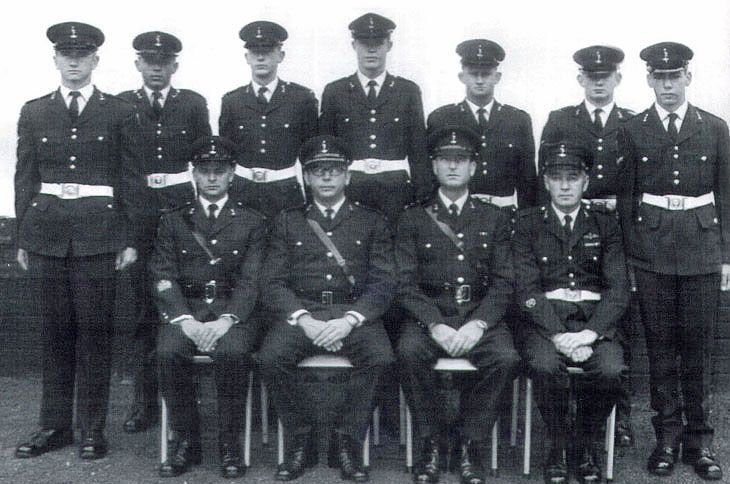
Fig 3.School of Signals Radio Technicians ca 1970 with the School Commandant Maj NI Osmond,
front row second later D.Sigs 1971-73
Another Durban electronics company called United Electronics,
specialising mainly in VHF equipment, had stepped into the breach early
in 1965 when the SR 47s were discarded by supplying Rh Sigs with the A60
Mk1, a lightweight VHF AM transceiver with six crystal-controlled
channels in the aeronautical band. These sets were issued to 1RAR, 1RLI
and C Squadron SAS down to platoon/troop level for ground-to-air use and
they soon proved their worth when used during a major exercise (Ex LONG
DRAG) held in September 1965 just two months before Ian Smith announced
Rhodesia's unilateral declaration of independence.
The outcome of Ex LONG DRAG was to prove crucial to the subsequent modus
operandi of the Rhodesian Army and indeed to its Corps of Signals. LONG
DRAG was organised by 2 Brigade for the purpose of testing its primary
unit, the RLI, recently converted from a conventional infantry battalion
to a smaller and more mobile commando unit with significantly increased
firepower. The exercise also involved troops from the RAR, SAS,
Engineers, Service Corps as well as the Rhodesian Air Force to provide
the necessary air support, reconnaissance, casualty evacuation and so
on. It was, in fact, the largest exercise held since the break-up of the
Federation. The exercise area was very extensive too, covering the
northern and eastern regions of Rhodesia.
HQ 2 Bde functioned as higher control for the exercise with K Tp, 2 Sig
Sqn, in the field with the new C14 radios to provide the necessary
long-distance communications. A calamity that nearly brought the
exercise to an ignominious close, almost before it had begun, happened
when radio communications between the exercise area and Cranborne
Barracks in Salisbury proved to be well nigh impossible. However, the
situation was rescued when WO1 Con Stuart-Steer, commanding K Tp,
constructed and erected (in double quick time) an antenna system known
to the international radio amateur community as the G5RV. Its
multi-frequency capability, horizontally polarised pattern and high
angle of radiation at low frequencies were ideal for the sky wave
propagation paths over the distances involved in the exercise. This
proved to be a salutary lesson.
Maj Munro, now OC 2 Sig Sqn, was the Chief Technical Umpire for the
exercise and, at its conclusion he, along with two colleagues from the
Army Service Corps, had to report on all technical and logistics aspects
and this, of course, included communications. Ground-to-air
communications using the A60 Mk1 were excellent even up to distances of
150km, depending upon intervening terrain and the aircrafts' altitude,
of course. By contrast, regimental communications within 1RLI, who were
still only equipped with the SR 62 and SR A10 radios (the TR28/B16 had
not yet arrived), were generally unreliable and often poor. Again, the
day was saved by the action of an experienced regimental signals officer
who set up a relay station, equipped with the A 60 sets, on high ground
in his area of operation. As a result he achieved good 24-hour
communications for his Commando and in so doing sowed a very important
seed. Maj Munro's umpire's report made special mention of this and, in
due course, it came to the attention of the Director of Signals who,
with his staff in the Directorate, soon realised that this use of
frequencies in the aeronautical band for ground-to-ground purposes
opened the way for an integrated communications system which naturally
included the Rhodesian Air Force. But to provide for so many additional
functions made radio equipment with a multi-channel capability an
absolute necessity.
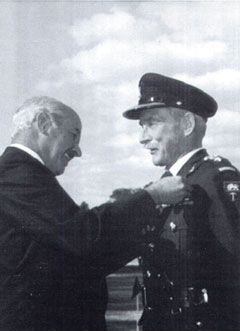
Fig 3. Lieutenant Colonel AHG Munro D Sigs 1973-76 receiving the Defence Force Medal for Meritorious Service in 1972
To those who have spent their lives as army signallers it will immediately be evident that thinking along such lines bordered on heresy because army VHF communication took place at so-called "low band" VHF (typically, 26 - 76 MHz). In addition, the allocation of radio frequencies to users - whoever and wherever they are - is a very carefully controlled and closely monitored activity, backed up by the rigours of international treaty and with the coercion of international sanctions always hanging over those who flout them. Fortunately, the relevant clauses amongst the international telecommunications regulations contained the inevitable footnote. It allowed countries in various parts of Africa to use frequencies in the aeronautical VHF band (or "high-band") for mobile ground-ground purposes provided the local frequency registration authorities agreed. In Rhodesia's case such agreement was readily forthcoming because the Department of Civil Aviation was the authority immediately concerned and it had long-since accepted the situation.
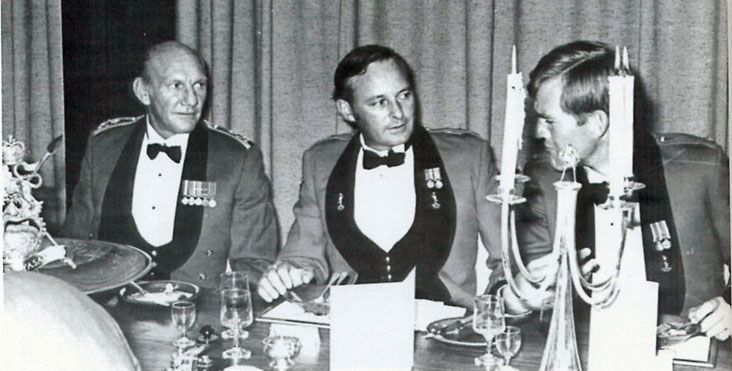
Fig 4. Lieutenant Colonel RTO Tilly, D Sigs/C Rh Sigs 1976-78 flanked by
Major General ALC Maclean, Chief of Staff, and Major HC Jaaback, C Rh Sigs 978-80.
But another hurdle had to be overcome and it had the potential of being
equally as damaging were agreement not reached. Local alliances between
some countries of southern Africa were strong: Rhodesia and South
Africa, particularly, were bound in many ways by ties of kith and kin
while both, in the late 1960s, both were facing the twin pressures of
African nationalism and negative world opinion. In addition, the two
Portuguese territories of Angola and Mozambique were in the same boat.
The natural inclination was for the military establishments in the three
countries to liaise very closely and nowhere is such cooperation more
crucial than in the area of radio communications. Both South Africa and
Portugal followed the policy of equipping their forces along Nato lines,
the latter for the obvious reason that she was a founding member of
that alliance. And standard Nato policy was to use "low band" VHF, with
frequency modulation (FM), for ground-to-ground communications within
and between armies. Any Rhodesian decision unilaterally to use "high
band" VHF, and with amplitude modulation (AM) to boot (since
aeronautical VHF communications were all conducted on AM), would cause
much concern and not a little chaos.
The Rhodesian Signals Directorate well understood all this. Fortunately
their links with their South African colleagues were very harmonious.
Following UDI and the immediate exclusion of all Rhodesians from any
contact with the British military establishment, those ties became even
stronger with contact and collaboration at all levels. Many Rhodesian
officers who would have attended Sandhurst as cadets and then returned
some years later as students on Staff Courses at Camberley, now found
themselves on such courses in South Africa instead. Indeed, possibly the
last Rhodesian to see the inside of Camberley was Major Norman Orsmond
who was destined to become Director of Signals of the Rhodesian Army. He
completed his staff course there the day before UDI was declared!
Though Ex LONG DRAG had clearly indicated the advantages to be gained by
going the "high band" route, and both the 12 channel A60 Mk2 and then
the 24 channel A63 were obtained from the manufacturer in Durban, other
factors necessitated closer liaison between the southern African allies.
By 1970 all three countries were facing either incursions by
Marxist-trained and inspired terrorists (ZANLA and ZIPRA) or, as in the
case of Mozambique, an internal insurrection by FRELIMO, the nationalist
movement bent on driving the Portuguese out of the colony.
Rhodesia set up a number of operational areas as the terrorist
incursions spread across the country. Each area was given a highly
distinctive name such as Op Hurricane which extended through the north
and northeast; Op Thrasher that covered the eastern region, Op Repulse,
the southeast, and so on. Within each was the Joint Operational Command
(JOC) from where everything was coordinated. Sub-JOCs existed at the
various Forward Airfields or FAFs, while the two main air bases were at
New Sarum outside Salisbury and at Thornhill near the town of Gwelo.
Cooperation between the armed forces of (some of!) Rhodesia's neighbours
was now vitally important too. In the early days of the bush war
Rhodesian and Portuguese troops fought almost shoulder-to-shoulder in
some actions while South African troops and aircraft were to play an
ever more important role later on. This cooperation between the three
countries stepped up a gear in 1971 when agreement was reached to
standardise military communications as far as possible so as to achieve
compatibility down to the lowest level. This, of course, meant low band
VHF with FM as the modulation mode, precisely the system the Rhodesians
had abandoned five years before.
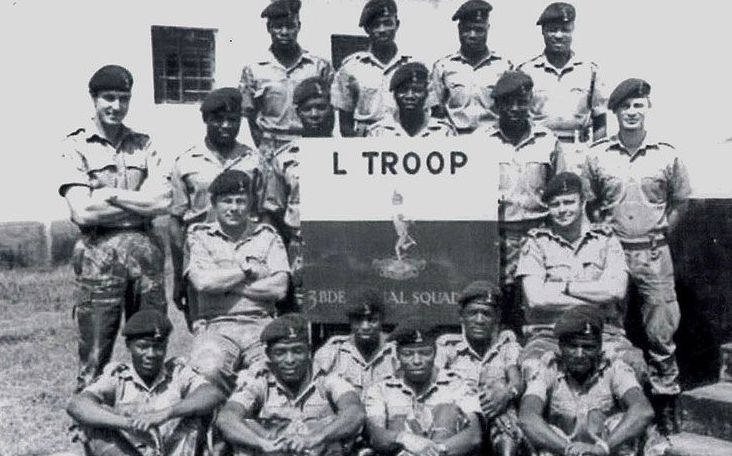
Fig 5 L Troop, 3 Brigade Squadron, 1971
To some extent Rhodesia's hands were tied because of its dependence on
the South African armaments industry. The Signals Directorate, under its
new Director Lt Col Orsmond (who had just taken over from Lt Col Bill
de Haast) and his Air Force counterpart, therefore had little option but
to agree and so the 24 channel SR A30 was ordered from South Africa for
use by the infantry. Both the Rhodesian Air Force and the para-military
British South Africa Police (BSAP), whose history was as old as
Rhodesia's itself, took steps to equip themselves accordingly in order
to ensure interoperability.
But the infantry were soon decidedly unhappy and it was the man
literally on the ground - the infantry soldier - who rejected the SR
A30. The flexible whip antenna it required at low-band VHF was too long:
it got in the way when boarding and alighting from a helicopter; it
made a noise when being dragged through the thick bush of the Rhodesian
lowveld and, most importantly of all, it made the man carrying the radio
a sitting duck of a target. These concerns were soon raised at the very
highest level and since they were echoed by the Air Force, but for
rather different reasons, they carried much weight.
The Rhodesian Air Force was greatly concerned at the switch to low-band
VHF forced upon it because of the need to maintain radio contact between
its helicopters and the troops on the ground. Until now the existing
high-band VHF equipment onboard the helicopters served this purpose
admirably. Changing to the lower frequencies would necessitate fitting
antennas more than twice as long as the existing dual dipoles mounted on
pylons ahead of the helicopter's Perspex canopy. Not only would the
increased length pose severe operational problems to the aircraft but,
even more importantly, it was felt that the Becker homing system with
which all the helicopters were fitted, and which played such a crucial
role in the operations with the army (as we shall see), would be
severely compromised.
It was clear that a critical decision had to be taken even if that meant
reversing the previous one and incurring some cost penalties as a
result. The Director of Signals to whom this unenviable task fell was Lt
Col Gordon Munro (no stranger to controversy!). After studying the
situation very carefully, and having conferred at length with his
counterparts in the Air Force and the BSAP, Gordon Munro, in his
position as ex officio chairman of the Joint Signals Board (JSB),
produced a logical and tightly argued case that he submitted to the
Operations Coordinating Committee (OCC) for its approval. It was soon
forthcoming and so the reversion to high-band VHF was approved. In the
light of the rather special circumstances in which the Rhodesians found
themselves, the South African military agreed that compatibility with
its ground forces should, under the circumstances, be sacrificed. The
Portuguese by this stage had already abandoned both Angola and
Mozambique.
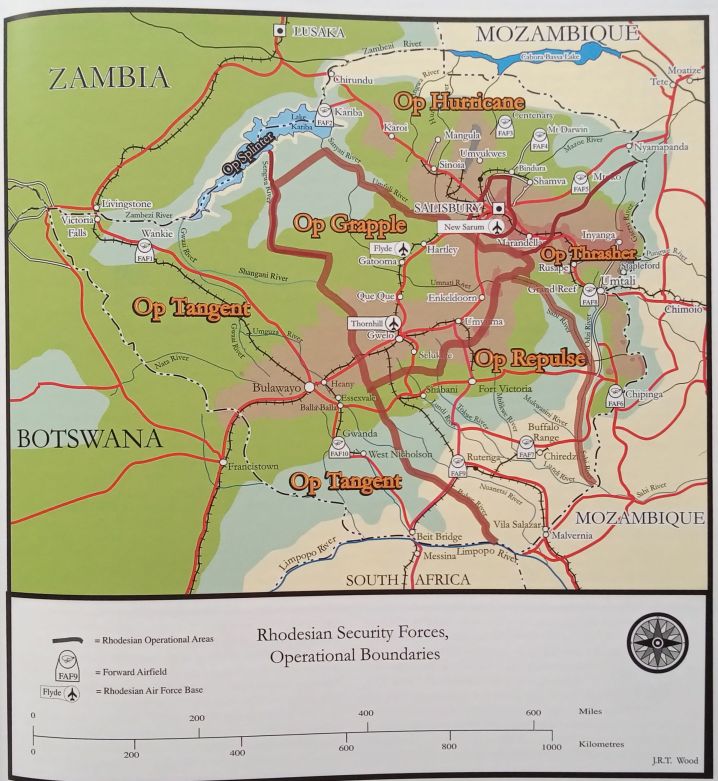
Fig 6 Rhodesian Security Forces operational areas
Throughout the Bush War the Rhodesian Air Force flew, amongst many other
aircraft, the Alouette III helicopter, usually in very close support of
the RLI, RAR, SAS and Selous Scouts below them on the ground. It
became the workhorse of the war and the Fire Force tactics developed by
the Army and the Air Force depended on the very closest of cooperation
between them.
By 1970 the degree of "jointery" achieved between the Army, the Air
Force and the BSAP made the Rhodesians into a formidable fighting force
and the terrorists were very much on the back foot as a result. The
country had even managed to ride out the privations caused by
international sanctions by adapting to the circumstances and by
exploiting to the full the rich agricultural harvest that had long made
Rhodesia the breadbasket of Africa. This spirit of enterprise paid off
in other directions too with some individuals becoming expert "sanctions
busters"!
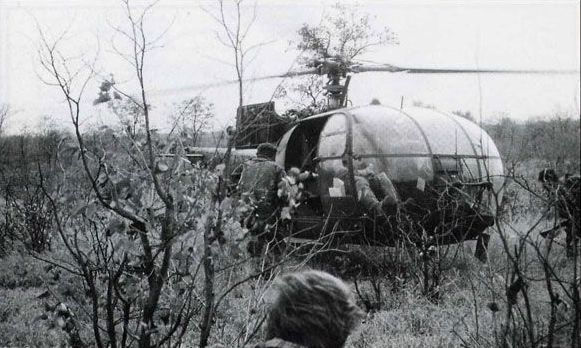
Fig 7 An Alouette III Helicopter and RLI stick during a Fire Force operation in the Zambezi valley.1979
The Fire Force concept was defined in the counter insurgency (COIN)
manual as the "Immediate reaction to a reported terrorist presence by
helicopter-mobile troops in conjunction with appropriate air support".
The Fire Force itself consisted of a reinforced rifle company of 120 men
made up of the command element, helicopter-borne "stop" groups, a
parachute "sweep" group and a reinforcement group also known as the land
tail or second wave. Its key element was the four man "stick" with each
stick (of which there were usually four or five per operation) under
the command of a corporal armed with an FN 7.62mm rifle and carrying an
SR A63 radio. With him were three infantrymen, one with a
general-purpose MAG machine gun while the others were armed with FNs.
One of those also doubled as a medic. The corporal had considerable
autonomy as to how he conducted the operation and he exercised a degree
of initiative not common at that level in many armies. As a result, it
was very much a "corporals' war". Working closely with the sticks were
tracker-combat teams of four to five men whose tracking skills had been
honed by the rangers of the National Parks Board.
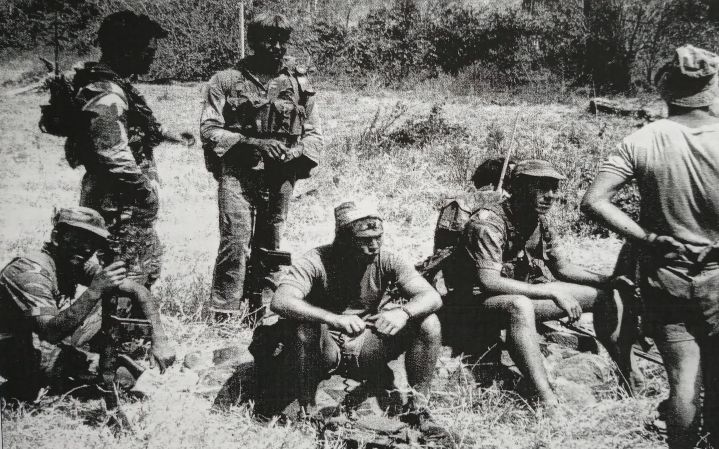
Fig 8. Regrouping after a Fire Force operation
The sticks went into battle in the Alouette helicopters led by the K-car
carrying the Fire Force commander who was usually an RLI major. As well
as controlling the action on the ground by radio, the K-car also played
a vitally important attack role because it was armed with a
side-mounted 20mm cannon. Following immediately behind it were three or
four other Alouettes each armed with twin (later quad-) barrelled 0.303
calibre machine guns. Each G-car carried a four-man infantry stick.
Later in the Bush War, the RLI joined the SAS is using paratroopers
jumping from the Air Force's fleet of vintage Dakotas. The paras set up
ambush positions and stop groups as part of the Fire Force actions and
also played crucial roles in the many cross-border operations that the
Rhodesian Army mounted into both Mozambique and Zambia.
From a signals point of view it's important to understand how the Fire
Force operated. Essentially there were three distinct types of
operations: pre-emptive strikes, call outs and rapid reaction events.
The first usually followed intelligence reports from a variety of
sources, e.g. captured terrorists and collaborators, from SAS teams or
from airborne reconnaissance by the Air Force's Canberras and Hawker
Hunters. The second followed reports, by radio, from ground-based
observation posts (OPs), soon to become the preserve of the Selous
Scouts who were quite unsurpassed as clandestine operatives; while the
third would be in response to a terrorist attack on ground forces or
civilians. All Fire Force actions clearly required excellent radio
communications with the last even involving in-flight briefing by radio
when en-route. Not surprisingly, the conventional army-style voice
procedure was found to be far too pedestrian and so a very slick
procedure soon evolved that became synonymous with the Rhodesian
military forces. To increase the area of coverage relay stations were
sited on carefully selected mountains with some being unmanned and
therefore battery charging was accomplished using solar panels.
In 1976, when Lt Col Dick Tilly took over as DSigs , a title soon to
become Commander Rhodesian Corps of Signals (C Rh Sigs), the situation
in southern Africa changed dramatically. First of all, following a
military coup in Portugl in 1974 and the toppling of the government, the
two Portuguese territories in southern Africa, Angola and Mozambique,
were granted precipitate independence. The outcome was that Robert
Mugabe's ZANLA were given free rein within that country by the
Mozambique government of Samora Machel. Then, South Africa embarked on
its détente exercise of trying to reach an accommodation with the
so-called front-line states. Until then there had been a contingent of
South African policeman operating alongside the Rhodesian forces,
ostensibly to prevent South African terrorists from infiltrating through
Rhodesia en route to South Africa. They were now withdrawn and
Rhodesia, essentially, was on its own.
Then, in September 1976, the Americans became involved when Henry
Kissinger, the US Secretary of State. He contrived with the South
African government to put pressure on Rhodesia to reach an immediate
accord with the African nationalists led by Mugabe and Nkomo. But to the
Rhodesians that looked like abject surrender and it was made worse by
the fact that the South African government had taken steps to hold back
essential supplies of ammunition and fuel that were so vital to
Rhodesia's military success in the field. In addition, South African
helicopters and their crews, as well as members of the South African
Corps of Signals who had been engaged in electronic warfare (EW) on
Rhodesia's northern border, were summarily withdrawn. But all was far
from lost, at least from a Signals point of view. In 1975, a Rhodesian
company well known as a manufacturer of domestic and car radio receivers
began producing equipment suitable for the much harsher military
conditions. WRS Electronics, having obtained the services of a highly
skilled engineer from South Africa, produced a synthesized AM
transceiver that operated from 122 to 142 MHz that became the SR A76 in
the Rh Sigs inventory. It followed this with synthesized HF SSB radios
SR B29/30, the latter with an automatic antenna tuning unit (ATU).
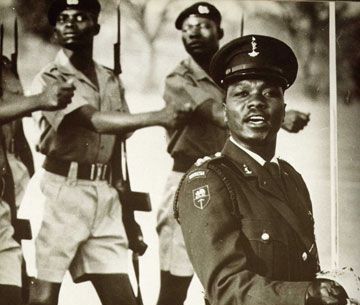
Fig 9 Lt Fana Takawira Ndluvu, Rh Sigs, and a bunch or recuits at the RAR depot
The intensity of the bush war increased markedly and the Rhodesian
forces were, at times, considerably stretched. In March 1977 Rhodesia
appointed a Commander of Combined Operations (Lt General Peter Walls,
formerly Commander of the Army) and a Combined Operations Centre
(Comops), with Lt Col Henton Jaaback, who was soon to become C Rh Sigs,
as Senior Signals Officer. Comops now took overall charge of the
execution of the war, both tactically and, to some extent,
strategically. The enemy was no longer the rather rag-tag bunch they
were in 1966 when the first serious raids were launched into Rhodesia
from Zambia. By 1978 the Chinese-backed ZANLA forces of Mugabe claimed
to have 15,000 armed men inside Rhodesia; by comparison Nkomo's ZIPRA,
with its Russian backing, never deployed more than 2,000 inside the
country. The bulk of ZANLA's forces remained in Zambia. This disparity
in approach was just one of many differences between the two terrorist
"armies": ZIPRA were essentially trained for a conventional assault on
Rhodesia when the time was judged to be right; ZANLA, by contrast,
adopted Mao's doctrine of infiltrating the local population who were
then to be cowered, often with considerable coercion, into furthering
Mugabe's cause. However, a tenuous and often extremely fractious fusion
between the two terrorist forces was eventually brought about by
pressure from the Organisation of African Unity (OAU) and so the
so-called Patriot Front (PF) came to be ranged against Rhodesia's
military forces.
To counter this the Rhodesians mounted a series of cross-border
operations to destroy the PF camps that intelligence had indicated were
bases from which incursions were being mounted into Rhodesia. Accounts
of these highly successful raids have been given in considerable detail
elsewhere, so just one will be discussed here, but it should be
appreciated that Rh Sigs played a massively important part in all of
them since their success depended critically on effective radio
communications. The fact that communications were so successful meant
that Signals were frequently just taken for granted. Not only had the
Fire Force tactics become highly developed but also the more
conventional style of warfare involving much larger forces, including
Rhodesia's Armoured Car Squadron as well as the Rhodesian Artillery, was
becoming increasingly common.
Op Uric in September 1979 was a classic example of a highly coordinated
cross-border raid by Rhodesian land and air forces supported by a
significant number of South African Air Force helicopters and ground
troops (the South African government under its new Prime Minister, P W
Botha, being considerably better disposed towards the Rhodesian cause
than was his predecessor B J Vorster). Since it was known that FRELIMO,
now essentially the army of Mozambique, were equipped with Russian-made
radars, the Rhodesians fitted a Dakota aircraft with HF, VHF and UHF
receivers connected to clusters of antennas disposed about the Dakota's
fuselage. That appearance led naturally to its name, the Warthog. The
four signallers from 8 Sig Sqn, the Army's EW specialists, who manned
the Warthog were able to monitor all possible frequencies likely to be
used both by the radars as well as the usual communications channels
used by ZANLA and ZIPRA. Also on board was a Rhodesian-developed
automatic encryption system connected to the signallers' teleprinters
thereby massively speeding up the processing of all outbound radio
messages. This unarmed EW aircraft was to prove vital in all such
cross-border operations and it contributed greatly to their success.
Though the Rhodesians were never defeated on the battlefield, such conflicts as the country had waged for nearly fifteen years since UDI are never won by military means alone. Eventually, in November 1979, the Lancaster House Conference settled Rhodesia's fate. The following February the country went to the polls and Robert Mugabe's party won a landslide victory - though evidence of massive intimidation was stark. In a letter to The Times in January 1978, the retired British General Sir Walter Walker wrote the following about the Rhodesian army:
"Their army cannot be defeated in the field either by terrorists or even a much more sophisticated enemy. In my professional judgement based on more than twenty years' experience, from Lieutenant to General, of counter-insurgency and guerrilla type operations, there is no doubt that Rhodesia now has the most battle-worthy and professional army in the world today for this type of warfare."
And undoubtedly, Certa Cito meant exactly what it said in Rhodesia.
The author gratefully acknowledges all the assistance and encouragement he received when writing this article from two retired Directors of Signals of the Rhodesian Army, Colonel Gordon Munro and Brigadier Norman Orsmond. The former's history of Rh Sigs (co-authored with Lt Col Henton Jaaback) is an invaluable reference from which many of the photographs and tables used here originate. The author also wishes to place on record his sincere thanks to Chris Cocks of the publishers 30 Degrees South in Johannesburg for permission to use photographs and other material from "The Saints" by Alexandre Binda and to Richard Wood for use of the map.
Brian Austin is a retired academic and sometime soldier. As an
electronics engineer educated in South Africa he worked for ten years in
the Chamber of Mines Research Laboratories developing radio systems for
use underground in mines before becoming a senior lecturer at his alma
mater, the University of the Witwatersrand, in Johannesburg. Then, after
emigrating to England with his family in 1987, he joined the Department
of Electrical Engineering and Electronics at the University of
Liverpool.
His soldiering all took place in South Africa where, after national
service in the South African Corps of Signals, he spent another twelve
years in the Citizen Force (TA equivalent) before retiring as OC
Tactical Communication Signals Squadron at Witwatersrand Command in the
rank of Major.